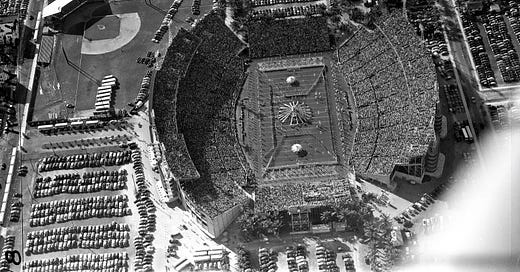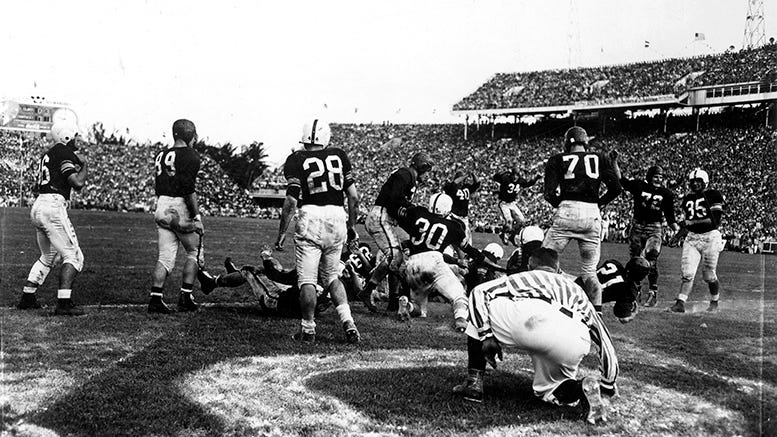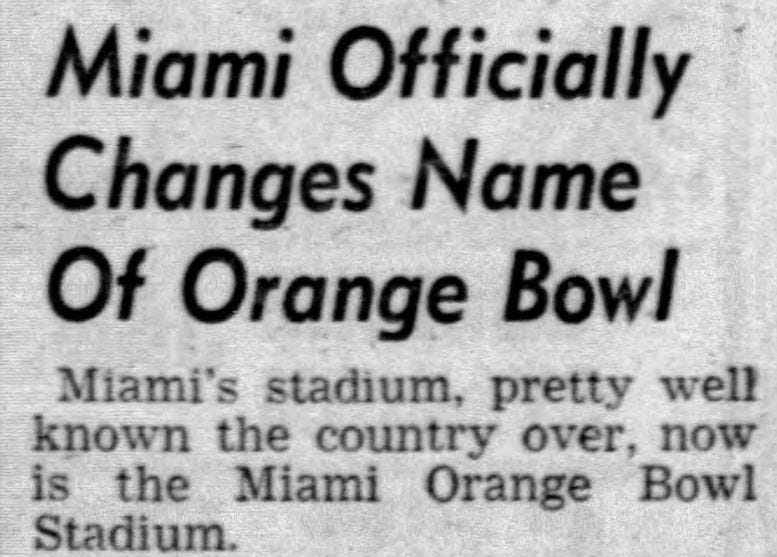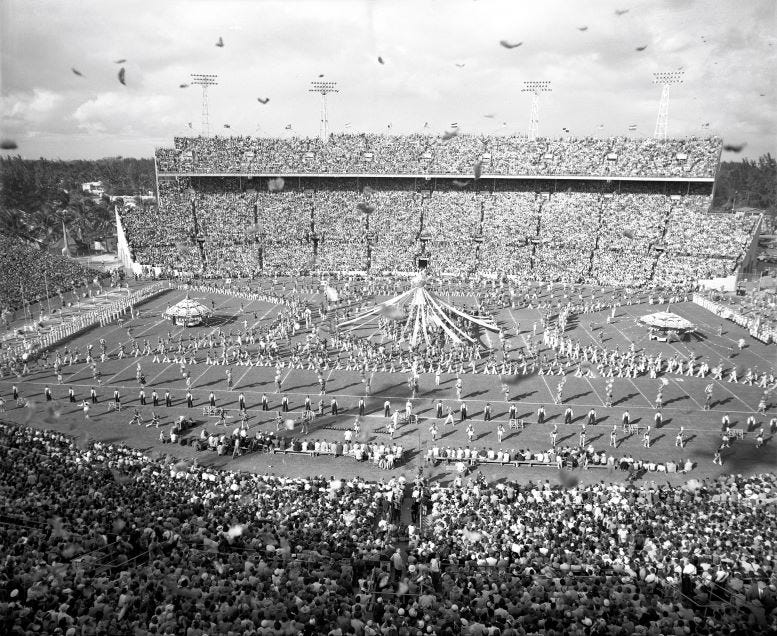Orange Bowl Stadium (1948 – 1957)
History of the Orange Bowl stadium from 1948 until 1957. The stadium was renamed from Roddy Burdine Stadium to the Orange Bowl on January 19, 1949.
The first decade of the Roddy Burdine Orange Bowl stadium was a time of constant change and reconfiguration. The next ten years were no different. A reconfiguration of the official name, a consideration for an entirely new name, and several additional enlargement projects highlighted the evolution of the venue during its second decade.
As a city owned stadium, the municipality was responsible for raising the funds and overseeing the expansion projects. Bond issuances were sometimes controversial, but the city officials, along with the stadium’s advocates, were generally successful in acquiring the funds to grow the stadium over time.
College football bowl games brought in a lot of revenue for their host cities, and it created an arms race of sorts to ensure each of the municipalities that hosted a major bowl game had a state-of-the-art facility and enough seating capacity to attract the optimal matchup for their annual gridiron classic. This is the story of the second decade of the Orange Bowl Stadium when its namesake bowl game was still the seminal event hosted in the venue from 1948 through 1957.
Stadium Officially Renamed in 1949
Over the course of the stadium’s first twelve years, the official name of the venue and how it was referred were slightly different monikers. While the city intended to honor Roddy Burdine for all he had done as a civic leader by naming the stadium after him after his untimely passing, it wasn’t long until everyone, both locally and nationally, began referring to it simply as the ‘Orange Bowl’ for simplicity. Given that Roddy had passed away more than a decade earlier, by the late 1940s Miami had grown considerably and residents, as well as visitors traveling to Miami for the venue’s New Year’s Day event, had never heard of Roddy Burdine and were confused when the stadium was referenced by both Roddy Burdine Stadium and the Orange Bowl Stadium.
Following the Orange Bowl game played on January 1, 1949, when the underdog Texas Longhorns defeated the heavily favored Georgia Bulldogs by a score of 41 – 28, the Miami city commission voted on a resolution to officially change the name from ‘Roddy Burdine Orange Bowl Stadium’ to just ‘Orange Bowl Stadium’ on January 19, 1949. The commission vote count was three to one to pass the resolution, with only Perrine Palmer Jr. as the dissenting vote. Perrine had been the mayor when the city considered building a new stadium a few years earlier, but had transitioned to a city commission seat after his term as mayor ended on January 1, 1949. There was a vacant commission seat at that time which is why only four votes were cast.
The resolution to change the name was presented by Commissioner William W. Charles who explained the need for the change in a Miami News article dated January 20, 1949: “The stadium now is known by many names, which results in much confusion, and that detracts from its publicity value.” The Orange Bowl Game was a big business venture and anything that detracted from ‘its publicity value’ needed to be addressed, which is what the commissioners used as justification for the name change.
Keep reading with a 7-day free trial
Subscribe to Miami History to keep reading this post and get 7 days of free access to the full post archives.







